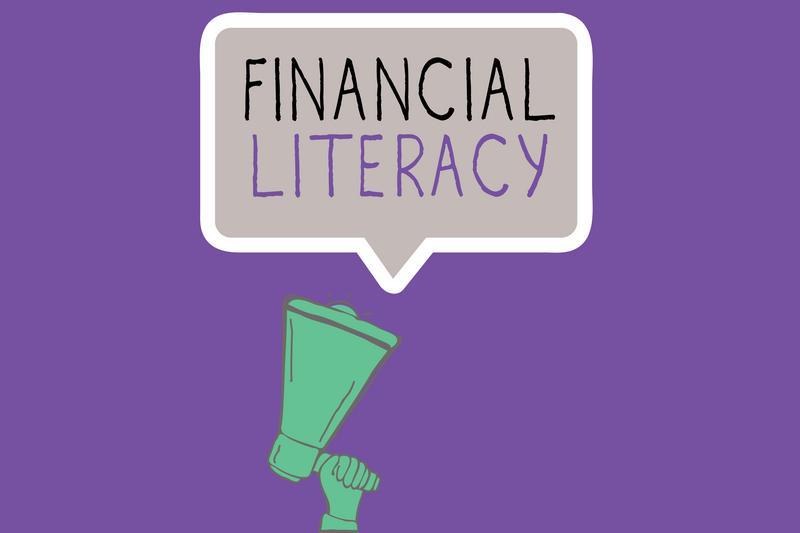Educators work to include a wide array of studies within the required curriculum for young adults. However, there’s a key component of life in which students of all ages aren’t gaining enough knowledge: financial literacy.
Even though financial literacy is crucial to successful “adulting,” a mere 17 states require high school students to take a course on financial literacy. These courses have proven to have a direct impact on a student’s ability to make wise
financial decisions. Plus, students who have some
personal finance classes under their belts are much more likely to successfully
save money, budget wisely and invest smarter.
Financial Literacy for Beginners
Perhaps we should reevaluate how we’re educating students (or
not educating students) on these
important life aspects. Until that change happens, though, here are the five key concepts to work on in order to improve financial literacy for students. Mastering these aspects won’t always be easy. However, with a little bit of practice, they will benefit you for a lifetime.
The Basics of Budgeting
Creating and maintaining a budget is one of the most basic aspects of staying on top of your finances. In this modern day, it’s easier than ever to create a budget with the help of websites and apps, such as
Mint.com.
It doesn’t matter if math isn’t your strong suit. Thanks to these user-friendly tools, everyone can get help with keeping their finances on track. And, when utilized properly, they'll keep you in the know about where your money is actually going.
Without following a
budget, it’s difficult to hold yourself accountable on where your money is coming from and what it’s going toward. Mastering the basics of budgeting is where any financial novice should begin.
Real life: You will very likely need to budget your money as a college student. How much of your money should you realistically allocate toward clothing, school, and apartment supplies as well as late night pizza dinners.
Sometimes, your student bank account app will tell you how much you’re spending and where. Use that as a guide for how much you should allocate to each category – and stick to it.
Understanding Interest Rates
While you may touch upon the concepts within a mathematics course, it’s important to understand different aspects, like compound interest. Why? Not only can it help you save even more, but it can make the difference between borrowing a small amount and paying back much more than you need to for years to come.
Understanding the ins and outs of interest can impact your finances more than you likely realize, so it’s an important concept to gain a better understanding of early on in life.
Real life: If you have student loans, you’ll be dealing with interest rates and paying back interest sooner than you think. To get an idea of how much interest you’ll end up paying on those student loans after college, check out FinAid’s Loan Payment Calculator.
If you haven’t borrowed any money yet for college, it’s helpful to check out interest rates and estimated loan payments to give you an idea of how much to borrow for college right now.
Prioritizing Saving
Obviously, saving is an important aspect of maintaining a healthy financial situation. But many students don’t prioritize this aspect as much as they should. It’s easy to ignore things like retirement since it seems so far off in the future.
Learning to
save early on can help you gain the knowledge, practice, and set of skills you’ll utilize throughout your entire life.
Beginners can start working on this concept in the simplest sense, like
saving money for a higher-ticket item they desire. Working toward a goal is key here and students need to understand that there’s a lot of value in paying yourself first – because the bills will always be there.
Having peace of mind? Well, that comes with practice, diligence, and patience, all qualities you’ll develop when mastering your savings skill set.
Real life: Set a small savings goal for yourself to start. Maybe it’s $5 or $10 a week. Whatever you decide, increase the amount you save per week once your initial goal is easy and achievable.
It’s also smart to keep a “rainy day fund" in a savings account. This is money that you can dip into when the air conditioning goes out in your car, or you have to buy an unexpected flight home.
Credit-Debt Cycle Traps
Meaning: it’s much easier to lose credit than gain it, and many students don’t realize how easy it is to ruin their credit. Or how difficult it can be to regain
credit – before it’s too late. That’s why it’s crucial to provide knowledge on debt earlier than later.
Credit can be an extremely useful tool – if it’s managed correctly. Making rash decisions when you’re young can end up costing you throughout adulthood so it’s important to grasp the concepts and tools behind
responsible credit practices as early on as possible.
Real life: You may find that as soon as you arrive on campus, you’re flooded with credit card offers. Just because you’re out of Mom and Dad’s house and finally “on your own,” this doesn’t mean you should sign up for any and every card – and then go crazy.
If you do need a credit card for emergency purposes, compare offers to discover which one is the best for you and your student budget. Then when you do get one, use it responsibly. If you have student loans, you’ll have plenty of debt to pay after college; make sure you have very little credit card debt to tackle as well.
Identity Theft Issues & Safety
In this modern day and age,
identity theft is more prevalent than ever. Since everything is digital and just about everyone has shopped online at one point or another, your financial information is more vulnerable to fraud.
Understanding this concept, along with preventative measures, like password protection and limiting the amount of information shared online, can be the key to maintaining safe accounts or, inversely, can lead to financial ruin. While it’s not a foolproof science (people can be safe and things do still happen) it’s important to safeguard your finances as best as possible to avoid the threats that exist.
Real life: If your social media accounts are public, consider switching them to private – or limit how much detailed information you post. Also, never browse or make online purchases on a public computer.
With that, never use your credit card in a public setting. Wait until you get home to make those purchases.
Finally, make sure your passwords are strong. A strong password typically requires an uppercase letter, lowercase letter, number, and symbol.

